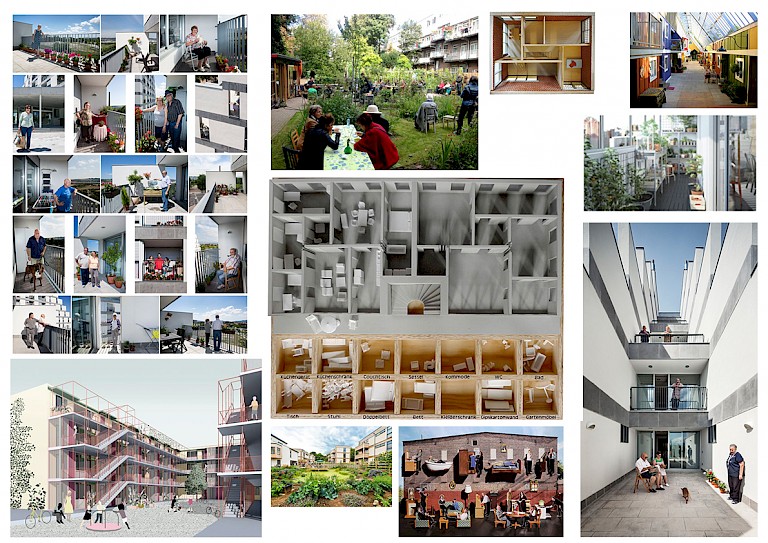
The Urban Design Group is offering free webinars and I would urge you to join these – speakers from all over the world are invited to share their thoughts and ideas on how society is changing so quickly due to COVID-19. These online events are set up as discussions with a Q&A towards the end, making them truly engaging for all. They spark key questions for many built industry professionals and students alike – do check them out online here.
One week ago, I presented alongside Michael Cowdy (Director at McGregor Coxall) and Yolande Barnes (Chair of the Bartlett Real Estate Institute) as part of the Housing, public realm and parks webinar. The discussions ranged from how we might rethink internal layouts of homes – from the smallest flats to larger family homes – to how critical our public realm and parks have become in this crisis.
I focused my presentation on housing and communities. In many of the new regeneration areas in London, we have lost the medium-rise, high density model to soulless tall buildings and leftover, poorly overlooked open space that does not consider pedestrians and cyclists navigating these neighbourhoods. Places like Canary Wharf and Nine Elms are prime examples, where a wind-swept public realm is the first thing one notices, whilst looking up at new, ‘snazzy’ tall structures. You may be surprised to find out that the densities of these newer models of living and London’s mansion blocks are similarly high, although the mansion blocks also deliver a finer grain of streets and spaces between buildings.
These 'older' models also nurture communities and foster a greater feeling of neighbourliness. During this period of lockdown, it has felt easy to connect with neighbours in my mansion block, where ten flats are accessed from one core. We are taking turns to provide groceries for older residents as well as helping to plant herbs and spices in our intimate courtyard which is a shared resource for all. This spirit of community is garnered in high-density models where neighbours can interact and connect with each other. It is clear that shared communal spaces have become even more critical and it is to design them to encourage better social interaction between neighbours.
Moving on to the internal layouts of homes, there is so much more that is desired now than before the COVID-19 crisis, when a home was what we returned to after an eight-hour day at work. Many more of us will be working from home and this is almost certainly going to increase depression and anxiety amongst many more homebound people. We need to start thinking about how we can function normally from home – from workspace needs to the requirements of other indoor activities – rethinking space standards and layouts to accommodate these shifts. Small yet innovative changes, such as how we design storage space, create areas for indoor greening/planting, design acoustics and orient homes to maximise natural light through the day, are going to be some of the most important considerations. Homes will also need to be more energy efficient and sustainable, given that our work lives and home lives may occur from the same spaces on most days of the week.
If nothing else, this pandemic provides an opportunity to rethink many design elements based on the changing needs of people – whether this is in our homes, streets or public open spaces.